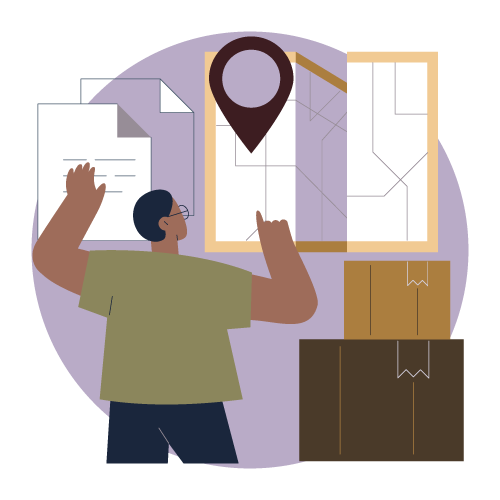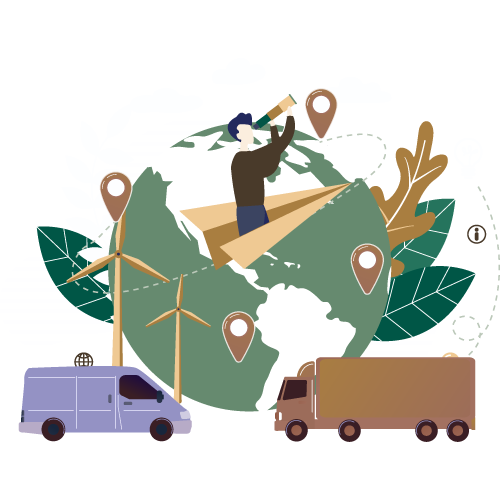Reverse logistics-UAE
It takes skill to balance effort and output in reverse logistics. We effectively combine product returns with forwarding distribution into a single facility through clever sorting, grading, and customer-beneficial operations like refurbishing in the UAE.
Request a Pickup
What does reverse logistics mean? How does it help businesses?
Moving products and items from buyers to sellers is known as “reverse logistics” in the supply chain management industry. In order to find ways to reuse, resell, or recycle goods that might otherwise wind up in a landfill, many businesses adopt this approach. This increases your brand’s reputation for environmental and social responsibility while also boosting your profitability.

Kinds of Reverse Logistics
Returns Management
The most typical reverse-logistics procedure, returns management, handles routine customer returns and ought to be a smooth, trouble-free experience in order to increase client loyalty and brand reputation.
Remanufacturing or Refurbishing
Products that are returned can be remanufactured or refurbished to cut down on e-waste and stop businesses and merchants from losing money on damaged or defective goods.
Repairing and Recycling
Devices can be returned to have warranty work done, as is the case with many electronic products. It must be properly disposed of if it cannot be repaired or disassembled.
When should an organization initiate reverse logistics?
Reverse logistics procedures are necessary to move a product whenever an item or product is returned to a business. It is possible to return an item in person, by mail, or at a different location. Companies want to use reverse logistics software to reduce the difficulties posed by rising return volumes, maintain affordability, and enhance customer satisfaction.


What benefits does an effective reverse logistics process provide?
Effective reverse logistics not only assists the bottom line but also the environment and corporate culture. The following are the main benefits of a successful reverse logistic process that can keep customers and make savings:
- Decreased costs for administration, transportation, and aftermarket assistance.
- Increased speed.
- Greater market share for services.
- The accomplishment of profits and sustainability objectives.
- Improved customer service, and higher levels of retention
Stages of Reverse Logistics
Now, we examine the function of each component of reverse logistics, which frequently outlines the logistics activities inside a supply chain.
Handling & Processing of Returns
This includes the steps that returned goods will undergo after they are taken out of the customers’ hands. It can assist businesses in reducing waste and pollution.
Categorizing Returns Appropriately
Products must be examined as they are returned to identify where they should go in the workflow. It could have to be discarded, refurbished, or ready for resale in order to fulfill another order.
Moving Products Department-wise
Moving things departmentally is part of this procedure since the item needs to be moved to the proper location where it may be managed and continue as needed through the rest of the supply chain.
Implementing Repair Operations
This process handles all the items so that any necessary operations can be performed to have them fixed right away and added back to the company’s stock, or disposed of properly if they can’t be repaired.
Recycling Unsaleable and Unrepairable Items
If it cannot be repaired or disassembled, it must be disposed of responsibly. When it comes to recycling and getting rid of things that can’t be fixed, businesses must take all necessary precautions.
Message us! Know how it works.
Give us a try. Discover More!
We are always ready to help our customers with the best advice and assistance.
Talk to our Service Experts.
Our experts with exceptional knowledge and experience in the field ensure you get top-quality ITAD services.
 USA
USA UK
UK UAE
UAE India
India